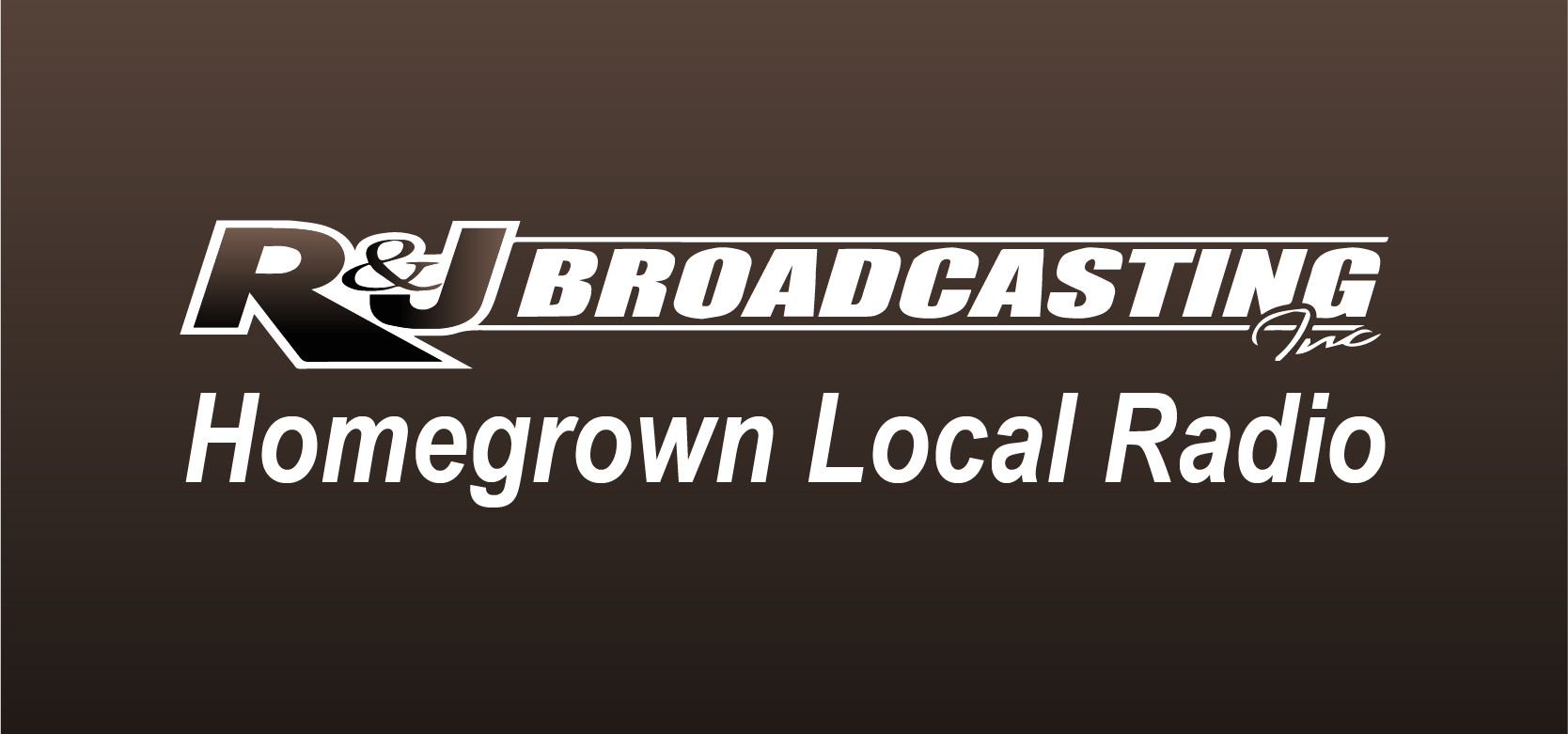United For ALICE in Koochiching County
As the United Way of Northeastern MN continues its project on ALICE in the Koochiching area, we reached out to Erin Shay, the Executive Director of United Way NE MN. She first gives us a rundown on what or who ALICE is.
She was then asked about how United Way came to get involved in the project.
Households move below or above the ALICE Threshold as economic factors and circumstances change. This was especially true during the COVID-19 pandemic, with higher wages, inflation, and additional pandemic assistance. By 2022, 1,893 households (33%) were below the ALICE Threshold in Koochiching County. So what is the major goal of United Way?
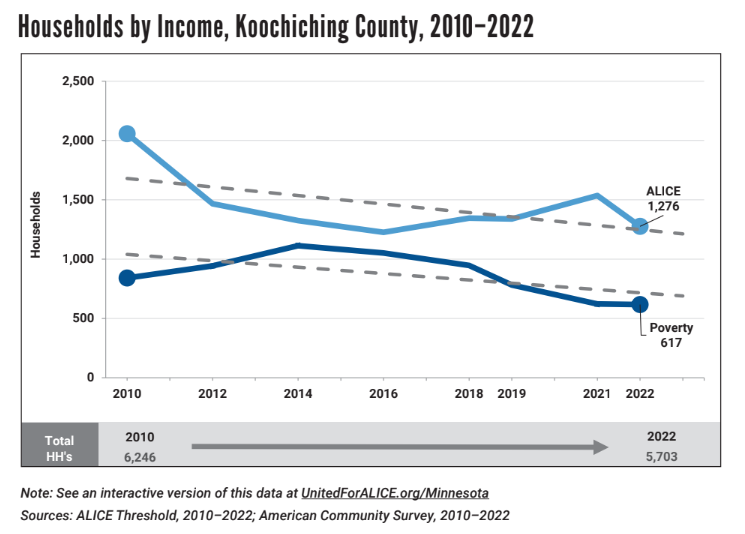
This data that United Way collects is taken very seriously as Erin Shay tells us.
With a goal of bringing attention comes a hopeful outcome of shedding like on the issue.
So, what is the importance of being aware of ALICE and what it is?
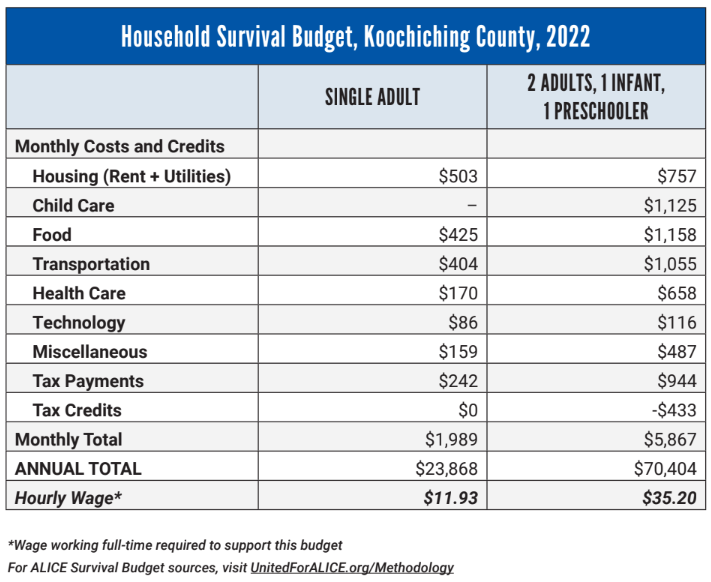
The Household Survival Budget reflects the minimum cost to live and work in the current economy and includes housing, child care, food, transportation, health care, technology, and taxes. It does not include savings for emergencies or future goals like college or retirement. The Household Survival Budget is calculated at the county level and by household composition, as costs can vary greatly depending on location and household needs.
Erin Shay even gives an example of a situation that had been presented to United Way and how tiers of those benefits would offer a great help to the folks of Koochiching County.
In 2022, household costs in Koochiching County were well above the Federal Poverty Level of $13,590 for a single adult and $27,750 for a family of four.
Groups with the largest number of households below the ALICE Threshold tend to also be the
largest demographic groups. However, when looking at the percentage of each group that is
below the ALICE Threshold, some groups are more likely to be ALICE than others.
By addressing the disparities in financial hardship by county demographics, community
members can move toward more equitable solutions.
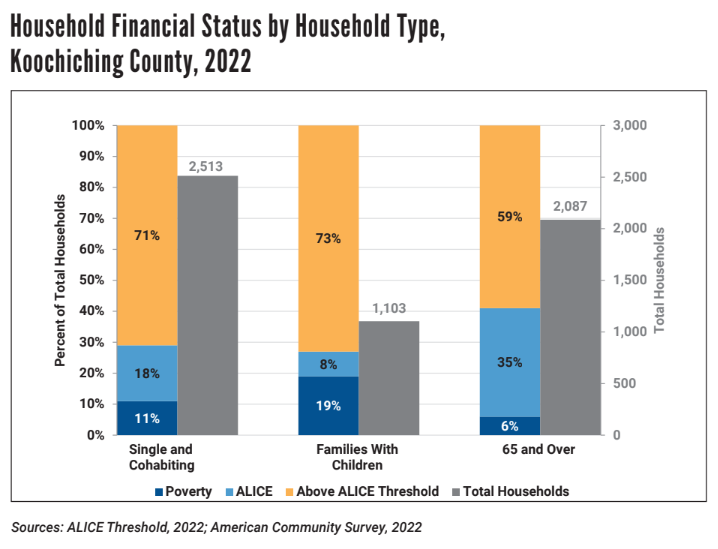

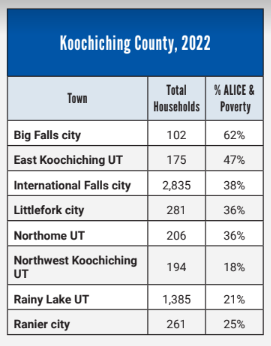
Erin finishes with sharing about the end goal.

